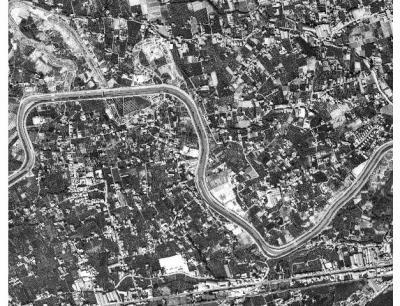A research study, in which Universidad Carlos III de Madrid took part, has concluded that traditionally irrigated Mediterranean landscape has suffered an important loss of the cultural and ecological patrimony that it holds, especially as a result of the modernization of the traditional watering networks established throughout this countryside.
The starting point for this research is the recent and relentless transformation processes that the traditional irrigation network in the Mediterranean region has undergone and the subsequent degradation of some of its landscape, of great value from the point of view of productivity, patrimony and identity. The study deals with the relation between water and the agricultural landscape as well as the treatment of patrimonial values in public actions. "It is vital that hydraulic policy and modernization projects for watering infrastructure be designed based on the principle of the multifunctionality of the old irrigation systems, assuming that economic efficiency not be the only parameter for evaluating public decisions. Cultural, patrimonial and even ecological values must be taken into account," concluded the UC3M Professor, Santiago Fernández Muñoz, who is the author of this study, together with Rafael Mata, Full Professor at the Universidad Autónoma de Madrid.
This research, stemming from the creation of a scientific panel to follow up water policy from an initiative of the Fundación Nueva Cultura del Agua, has been recently been published in Scripta Nova, the geography journal in the Spanish language with the highest impact in the JCR index. In the article, after carrying out a typology proposal of the traditionally irrigated countryside in Spain, its contemporary evolution is characterized, taking the Murcia huerta (farmland) as an example. The researchers have identified a relentless process of transformation of the Mediterranean huertas as a consequence of a reduction in the cultivated surface and encroaching housing developments. At the same time, the professors pointed out, the loss of cultural and ecological patrimony of the traditional irrigation and drainage networks carries with it a high risk of the disappearance of a valuable landscape in need of preservation, from a cultural, territorial, productive and even biological perspective.

This is an aerial view of a huerta area near the city of Murcia in which intense housing development can be observed.
(Photo Credit: UC3M)
A landscape with its own identity
The areas with the historic watering system are an excellent example of the agrarian landscape of Mediterranean valleys in dry and semi-arid areas. "They have been real agricultural oases, one of the most representative types in the Spanish Mediterranean area, which should be included among the most significant agriculture spaces in the European scale, together with the Atlantic bocages and the open fields in the continent's interior," commented Santiago Fernández Muñoz, from the UC3M Humanities Department: History, Geography and Art. "For certain areas, moreover, landscapes such as Valencia's horta or the Murcia huerta are as much identified with those region as are the Retiro for Madrid and Montserrat for Catalonia."
The last part of the researcher's study characterized some of the impact of modernization policies on patrimonial values for historic irrigated landscape and point out proposals to manage and safeguard these areas. "Such conservation has been carried out through the instrument of territorial and urbanistic planning or where appropriate, as in the historical patrimony or preservation of nature model, which might be applied," the researchers pointed out, who also stress "the necessary consideration of certain areas in the traditionally irrigated Mediterranean as "special protected" (as established in the Reglamento de Planificación Hidrológica (Hydraulic Planning Regulations) ; article 23) and which should be incorporated in the hydraulic plans currently being drafted in certain areas," the researchers summed up.

These are photographs of the Murcia farmland taken from the Cabezo de Monteagudo at the beginning of the past century and in 2008. The most important difference is the intense housing development, as well as the different type of farming: horticulture in the old photo and fruit trees in the more recent one. In short, the photos reveal the graphic chronicle of how an agricultural landscape has become a suburban landscape.
(Photo Credit: UC3M)
Source: Carlos III University of Madrid